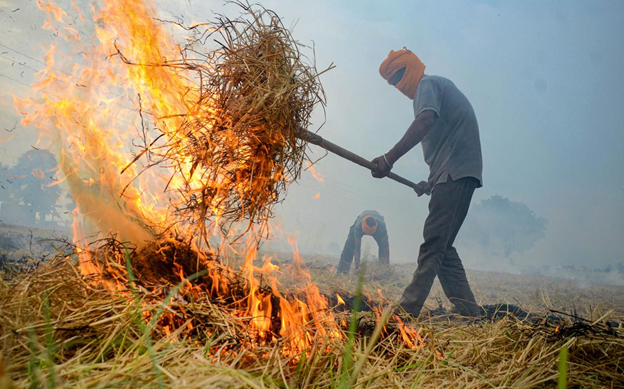Context
Recently, MoEFCC released Central Pollution Control Board’s (CPCB) guidelines for the grant of one-time financial support for promoting establishment of paddy straw based pelletisation and torrefaction plants.

About the scheme
- These plants would utilise a sizeable portion of the unmanaged paddy straw and help address the issue of crop residue burning and the resultant air pollution.
- A corpus of Rs 50 crores has been earmarked for utilisation through the guidelines.
- Participants: The financial assistance can be availed by individuals and companies setting up new plants and units using only paddy straw generated in Delhi, Punjab and Haryana, and NCR districts of Rajasthan and Uttar Pradesh.
- Costing: The estimated cost of setting up a regular pelletisation plant, which can process a tonne per hour, is 35 lakh.
- Under the scheme, the Centre will fund such plants to a maximum of 70 lakh subject to capacity.
- Torrefaction plant: The cost of establishing a torrefaction plant is 70 lakh and under the scheme, is eligible for a maximum funding of 1.4 crore.
- One-time only scheme: The Government has underlined that this would be a one-time only scheme and regular pellet plants would be eligible for 40 crore of the overall pie.
|
What is Stubble Burning?
- Stubble (parali) burning is a method of removing paddy crop residues from the field to sow wheat from the last week of September to November.
- The process of burning farm residue is one of the major causes of air pollution in parts of north India, deteriorating the air quality.
- Paddy stubble burning is practised mainly in the Indo-Gangetic plains of Punjab, Haryana, and UP to clear the fields for rabi crop sowing.
Different process for converting paddy straw
- Pelletisation means converting paddy straw into pellets which can be used in thermal power plants and industries as fuel.
- Torrefaction is a process to improve physical properties and chemical composition of biomass.
- Torrefaction is costlier but can deliver a product whose energy content is much higher and theoretically substitute for more coal in a power plant.
- The first 2G Ethanol Plant in Panipat is expected to utilise 2 lakh metric tonnes of paddy straw every year.
|
Significance of the scheme
- Saving coal and reducing carbon emissions: Paddy straw made into pellets or torrefied can be mixed along with coal in thermal power plants.
- This saves coal as well as reduces carbon emissions that would otherwise have been emitted were the straw burnt in the fields.
- Entrepreneurship opportunities: This scheme will help convert waste to wealth and provide entrepreneurship opportunities to our rural youth in Punjab and Haryana.
